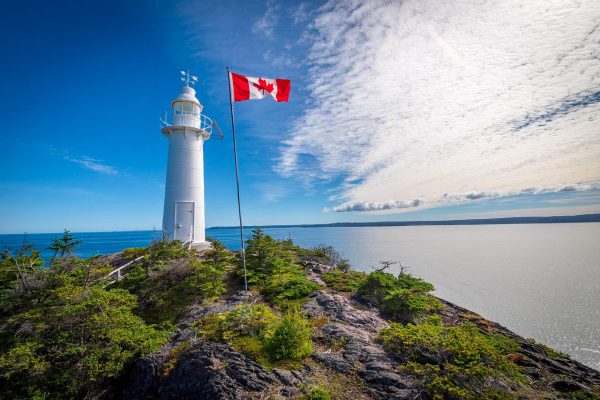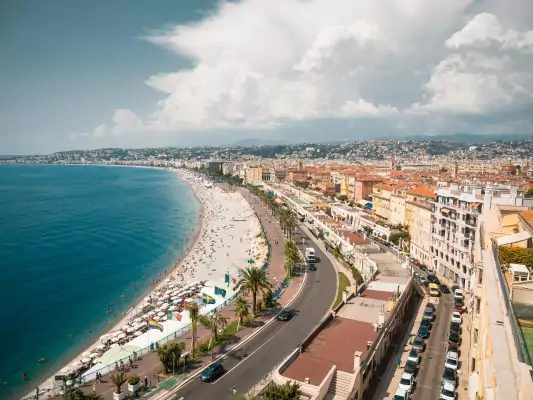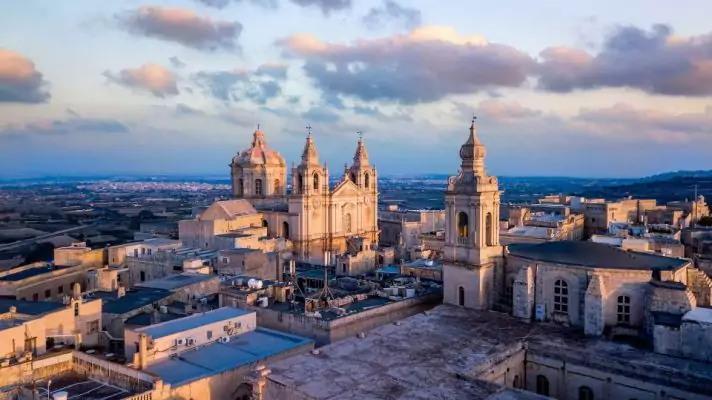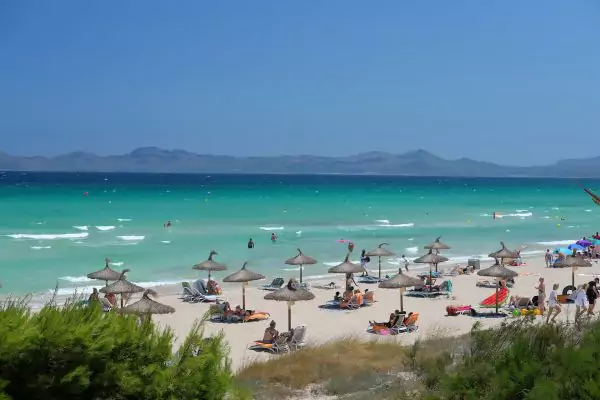Croatia 7-Day Itinerary – What to See and Do in One Week

Best things to see and do in Croatia in one week. Discover the country’s most famous landmarks and tourist hotspots in our Croatia 7-day itinerary!
This Croatia 7-day itinerary is a part of our broader travel guide for the country. We recommend you check it out for the best travel tips and the most accurate information on transportation, hotels, restaurants and best beaches in Croatia.
Croatia 7-Day Itinerary – Where to visit in Croatia in 1 week
Although 1 week is definitely too short to see the best Croatia has to offer, and if you really have no leeway to add a couple extra days, we’re still here to help you make the most of your experience. To do so, though, you’ll need to keep up the pace, even if you only end up visiting the “essentials”. By following our ambitious plan, you’ll still get to explore the Adriatic highlights of Dubrovnik, Split and Zadar, as well as the capital city of Zagreb
That being said, if you are looking for more comprehensive itineraries and have some additional time in hands, feel free to have a look at our extended guides to Croatia:
- Croatia 10-Day Itinerary – Best Places to Visit in the Country
- Croatia 14-Day Itinerary – Highlights of Two Weeks in Croatia
So, without further ado, here are the cities, places and tourist attractions you should visit in a 7-day itinerary through Croatia:
Croatia 7-Day Itinerary: Day 1 – Zagreb
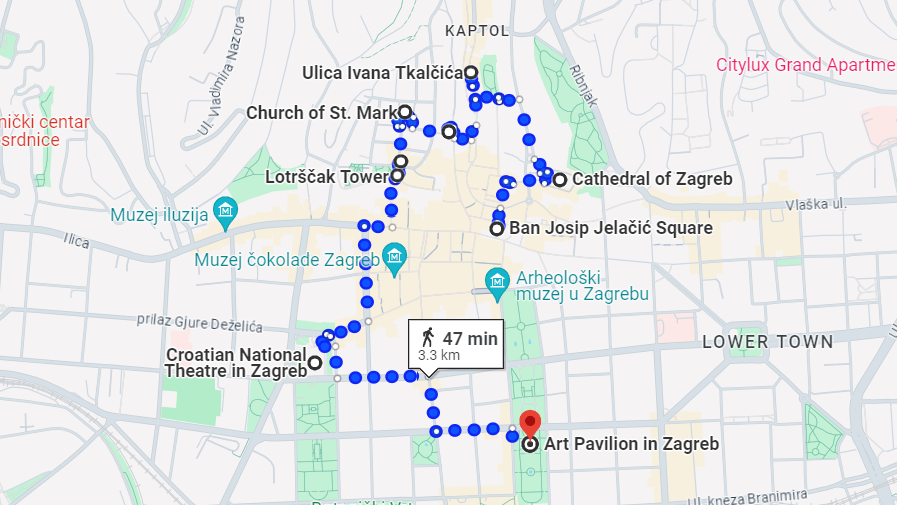
Although the journey could have easily started in Split or Dubrovnik, the main air hubs along the Croatian Riviera, the country’s busiest airport is located in the capital of Zagreb, making it the logical starting point. Makes sense. After all, what better way to explore a new country than by starting things off in the capital? Furthermore, since the remainder of your time will be spent along the coast, Zagreb presents an opportunity to experience a different side of Croatia, one where the Germanic influences of the Habsburgs are more present than those of Italy and Venice. Zagreb’s downtown is divided into two different areas: the Lower Town (Donji Grad) and the Upper Town (Gornji Grad). Let’s begin with the former, a district of wide, monumental boulevards and classic architecture, reminiscent of the likes of Budapest, Lviv or Krakow. This was the part of the city that was built in the 19th century, boasting grand imperial structures such as the Art Pavilion or the Croatian National Theater. A district that truly reflects Zagreb’s presence within a powerful empire.
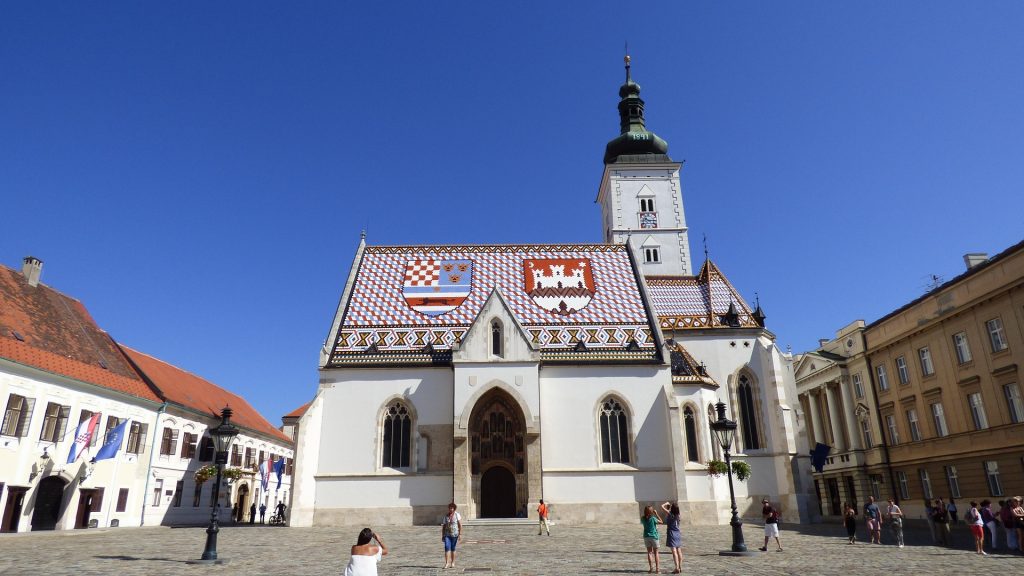
However, as you ascend the steep streets towards the Upper Town, you’ll notice the architecture and atmosphere changing. Here, in the city’s oldest quarter (dating back to the 11th century), high buildings give way to small houses and the imposing thoroughfares are replaced by narrow cobblestone lanes. While you’re free to explore this area at your leisure, be sure to check out the key attractions, including the Lotrščak Tower (€2,00), a lookout point near the walls of Gornji Grad; the Stone Gate, one of the original entryways into the Old Town; and Ivana Tkalčića Street, the most picturesque street in all of the Upper Town. Furthermore, no visit to Gornji Grad would be complete without a stop at St. Mark’s Church, probably Zagreb’s biggest symbol. While roaming the quarter, we also strongly recommend a visit to the Museum of Broken Relationships (€7,00), a rather unique institution. Spread across only 6 rooms, its exhibits consist of seemingly random objects, each accompanied by a story explaining its connection to a past relationship and how it came to end. Some of these reports can be funny, others extremely sad, and some are just numbingly relatable. Regardless, they all serve to highlight the complexity behind human emotion and connection… even when it doesn’t end well. On your way out of Gornji Grad, be sure to visit the Zagreb Cathedral, a wonder of gothic architecture, before finishing your tour at the bustling Ban Josip Jelačić Square.

First day wrap-up:
- Lower Town (Donji Grad)
- Art Pavilion
- Croatian National Theater
- Upper Town (Gornji Grad)
- Lotrščak Tower
- Museum of Broken Relationships
- Mark’s Church
- Stone Gate
- Ivana Tkalčića Street
- Zagreb Cathedral
- Ban Josip Jelačić Square
Where to eat in Croatia – Best Restaurants in Zagreb
- Heritage (Croatian traditional)
- Gostionica Ficlek (Croatian traditional)
- Plac Kitchen & Grill (Cevapi and hamburgers)
- Stari Kotač 2 (Cevapi and grilled meats)
- La Štruk (strukle)
- Nokturno (Italian)
- Taquitos Bandidos (Mexican)
- SOI fusion bar (Thai)
- Curry Bowl (Sri Lankan)
- Vagabund (varied)
Croatia 7-Day Itinerary: Day 2 – Bus to Zadar

When crafting weeks-long itineraries, there are always those days that require spending some time on the road, with very little time to do anything of substance. Well, today happens to be one of those days! Separated by 300 km, the journey from Zagreb to Zadar (your next destination) will take you along a monotonous route of winding roads, taking a solid 4 hours aboard a bus. However, considering the first buses depart at 07h00, you’ll still have enough time to enjoy most of the afternoon.
Be that as it may, and regardless of your preferred mode of transportation, you’ll probably make it to Zadar feeling a bit drained and not quite in the mood for extensive walks, which is why it’s best to lie down and soak up some much-needed Vitamin D. For that, we suggest hitting Nin Beach. A group of beaches stretching along a beautiful bay, this is considered one of the most romantic places in the Balkans. Plus, located just 20 km away from Zadar, Nin is far more accessible than the islands of Brac or Dugi Otok. On the other hand, if you’ve had enough of the road and prefer to stay close to Zadar, you can always relax at Kolovare Beach. It’s not nearly as captivating, but it’s conveniently located just a 10-minute stroll from the Old Town.

Second day wrap-up:
- Bus trip to Zadar
- Nin Beach OR Kolovare Beach
Croatia 7-Day Itinerary: Day 3 – Zadar

Yet another coastal city boasting a walled historic center, Roman ruins and medieval architecture, Zadar is often considered the third link in Croatia’s Adriatic tourism trifecta, alongside the better-known cities of Dubrovnik and Split. Truth be told, the fact that Zadar is even featured in the same discussion as these two gems speaks volumes about what’s in store for visitors, so fasten your seatbelt and tag along for the ride! Entering the Old Town, you’ll walk right through Kopnena Vrata (also known as the Land Gate), and find yourself navigating through yet another fabulous grid of ancient streets, narrow alleys and quaint squares. Better yet, no cars are allowed inside the city walls, making the entire scenery even more picturesque. Among the many attractions worth exploring, you can kick things off with a visit to the Church of Saint Simeon, followed by a stroll down the cobblestone street leading to People’s Square. Considered the beating heart of Zadar, this square houses the Clock Tower, the Town Hall and Gradska Loza, where royal proclamations took place.

Further ahead, you’ll come across the Roman Forum, an open-air museum featuring plenty of archaeological remains you can explore for free. On each side of the the Forum, there are two different churches: Zadar Cathedral, considered the city’s main religious building (you can climb its tower and enjoy the views for just €2,00); and the round-shaped Church of St. Donatus, probably the best example of traditional Byzantine architecture in Croatia. From there, you’ll make your way out of the Old Town from the opposite end of your entry point. As you reach the harbor, where land and sea meet, be sure not to miss Zadar’s most iconic sight. It’s quite curious that a city with such an ancient, rich history came to be known for a specific modern art installation. We’re obviously referring to the Zadar Sea Organ, a small staircase leading to the sea equipped with a set of underwater pipes that produce a different melody when touched by waves. While it may not sound like much through a blog post, experiencing it firsthand is nothing short of magical.

Zadar is lovely, but the Old Town is also quite compact. As such, if you don’t mind waking up early and getting through the day at a brisk pace, you can easily cover all these sights in a single one morning, leaving enough time to hit Sakarun Beach! Located on the island of Dugi Otok, a mere 90-minute ferry ride from the Port of Zadar, this awe-inspiring beach can go neck-to-neck with Zlatni Rat (we’ll get there) for the title of Croatia’s most pristine spot. In fact, it may even rank among Europe’s most beautiful beaches! In order to get there, catch a ferry from Jadrolinija departing at 12h00, 13h00 or 14h00, depending on the day and the time of the year (there are other departure times available but they’re not suited to this itinerary). The fare is €3,85 one-way. Also, please note that Dugi Otok has four ports, so make sure you’re catching a boat heading to either Brbinj or Bozava, the closest to Sakarun. Once you’re back in the city, catching the sunset from Zadar Riva – its most bustling promenade – is a great way to say goodbye to the historic town.
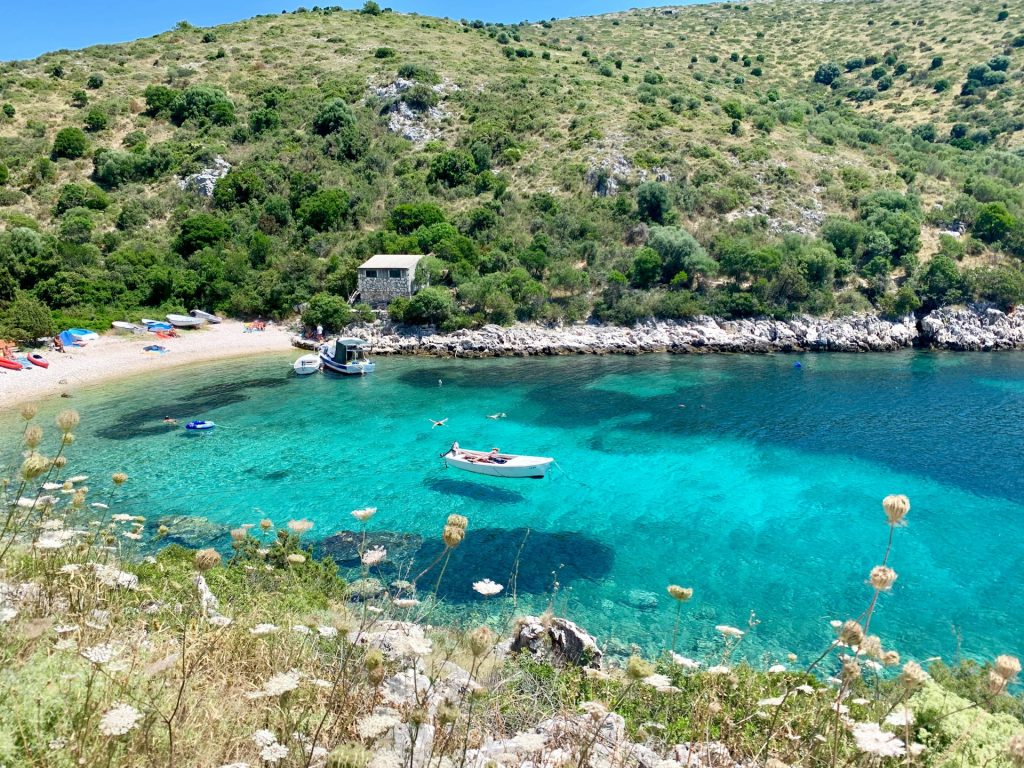
Third day wrap-up:
- Zadar
- Kopnena Vrata
- Church of Saint Simeon
- People’s Square (Clock Tower, Town Hall and Gradska Loza)
- Roman Forum
- Zadar Cathedral
- Church of St. Donatus
- Zadar Sea Organ
- Sakarun Beach (Island of Dogi Otok)
- Zadar Riva
Where to eat in Croatia – Best Restaurants in Zadar
- Sobe & Rooms Riva-Dalmacija Zadar (Croatian traditional)
- Konoba Tovar (Croatian traditional)
- Sabunjar (Croatian traditional)
- Gricko (cevapi and grilled meats)
- Tri Bunara (pizza)
- Bezburger (hamburger)
- House of Pancakes (sweet and savory crepes)
- La Baia Street Food (varied)
Croatia 7-Day Itinerary: Day 4 – Split

After spending your last night in Zadar, you’ll turn the early-riser mode and make the brief 150 km journey to Split, Croatia’s second-largest city and the biggest urban hub in Dalmatia. Despite being home to over 160.000 people, much of the Socialist, Lego block buildings lie on the outskirts, meaning the historic center looks and feels as if you’re visiting just another small town. However, once you get further and further from the Old Town, you can see a more local and cosmopolitan vibe that can only be matched (and surpassed) by that of Zagreb. Nonetheless, most of your time will be spent inside the walled historic center, partially occupied by Diocletian’s Palace. Despite its name, this is not a restricted or contained space, but rather a section of the Old Town where the Roman Emperor once lived. Because of that notorious status, this is where you can find most of the city’s main attractions, like the Peristyle, a central courtyard that became the palace’s postcard-picture; the Cathedral of Saint Domnius, formerly the emperor’s mausoleum (you can climb the tower for €3,00) located right in front of St Dominic Church; and the Temple of Jupiter, an ancient roman temple later converted into a church. Below the ground, you may also explore the Diocletian Caves (€8,00) and see one of Europe’s very first sewage systems (as well as a couple of “Game of Thrones” filming locations).

In order to enter the Old Town, you can walk through the iconic Golden Gate, in front of which lies a square featuring the Monument to Gregory of Nin, a towering statue of the local bishop created by Ivan Mestrovic, one of Croatia’s most famous artists. Once you’ve explored all of the historic center, exit through one of the southern gates leading directly to Split Riva, the liveliest local waterfront promenade. Tucked between the glitzy marina and the rustic stone walls of Diocletian’s Palace, walk westward past the colorful Republic Square until you come across a 300-step staircase. Though challenging, the effort will definitely be worth it once you make it to the top of Marjan Hill and collect the undisputed best view of the city as a reward! If you still have enough time in hands, make your way back on the opposite direction and crown your day with a dip at Bacvice Beach. Is this the most beautiful or idyllic beach in Croatia? Well, far from it… but when the scorching sun hits in a bustling city like Split, there’s no better spot for a quick, refreshing swim.

Fourth day wrap-up:
- Diocletian’s Palace
- Peristyle
- Cathedral of Saint Domnius
- St Dominic Church
- Temple of Jupiter
- Diocletian Caves
- Golden Gate
- Monument to Gregory of Nin
- Split Riva
- Republic Square
- Marjan Hill
- Bacvice Beach
Where to eat in Croatia – Best Restaurants in Split
- Buffet Fife (Croatian traditional)
- Restaurant Index (Croatian traditional)
- Kantun Paulina (cevapi)
- Buffet Zlatna Ribica (fish and seafood)
- Konoba Fratelli (pizza and pasta)
- Pizzeria Gust (pizza)
- To Je Tako (Mexican)
- Daddy Cool (falafel)
- Sexy Cow (breakfast and wraps)
- Vege Fast Food (vegetarian)
Croatia 7-Day Itinerary: Day 5 – Zlatni Rat, the most beautiful beach in Croatia

After a day that included a bus/car trip and plenty of time exploring Split (including the strenuous 300-step climb up Marjan Hill), there’s nothing quite like taking a day to relax by the beach and simply doing nothing at all! However, dear reader, this isn’t just any beach! Tucked away on the island of Brac, a stone’s throw from Split and Hvar (your next stop), Zlatni Rat is hailed as Croatia’s finest and most beautiful beach. With a shoreline of sand and pebbles stretching several hundred meters into the sea, it has this “Caribbean” quality to it!
To reach this beach paradise, you’ll need to catch a ferry from the Port of Split bound for Bol, the southernmost port on the island of Brac. From there, it’s just a quick 20-minute stroll to Zlatni Rat. The trip takes just 1h10 and tickets cost €8,40 one-way. There are several ferry companies running this quick route (details available in the general guide), but even during peak season there are no more than 5 daily departures each way. Alternatively, you may choose to board a ferry to Supetar, the main town on the island of Brac. With over a dozen departures each way during the height of summer (almost triple the frequency compared to Bol), this journey takes 50 minutes and costs €6,25. However, upon arriving in Supetar, you’ll need to transfer to an Arriva bus that will take you to the Port of Bol. This transfer adds an additional 55 minutes to your journey, along with an extra cost of €6,30. Regardless, you’ll have to make your way back to Split by the end of the day.

Fifth day wrap-up:
- Beach of Zlatni Rat (Island of Brac)
Croatia 7-Day Itinerary: Day 6 – Dubrovnik: Island of Lokrum

After waking up in Split, it’s time to take the very last bus journey of your adventure. Next (and final) stop: Dubrovnik. Known as the “Pearl of the Adriatic”, Dubrovnik is the town that catapulted Croatia onto the list of the world’s most sought-after tourist destinations, a popularity further fueled by its prominent role in “Game of Thrones”. Although overtourism poses a serious challenge for the city nowadays, one can’t deny just how absurdly beautiful this place is, standing out as one of the most spectacular in all of Europe! However, since your journey there will take up most of your morning, it’s wiser to save the Old Town for tomorrow and take the afternoon to explore some more off-the-grid attractions.
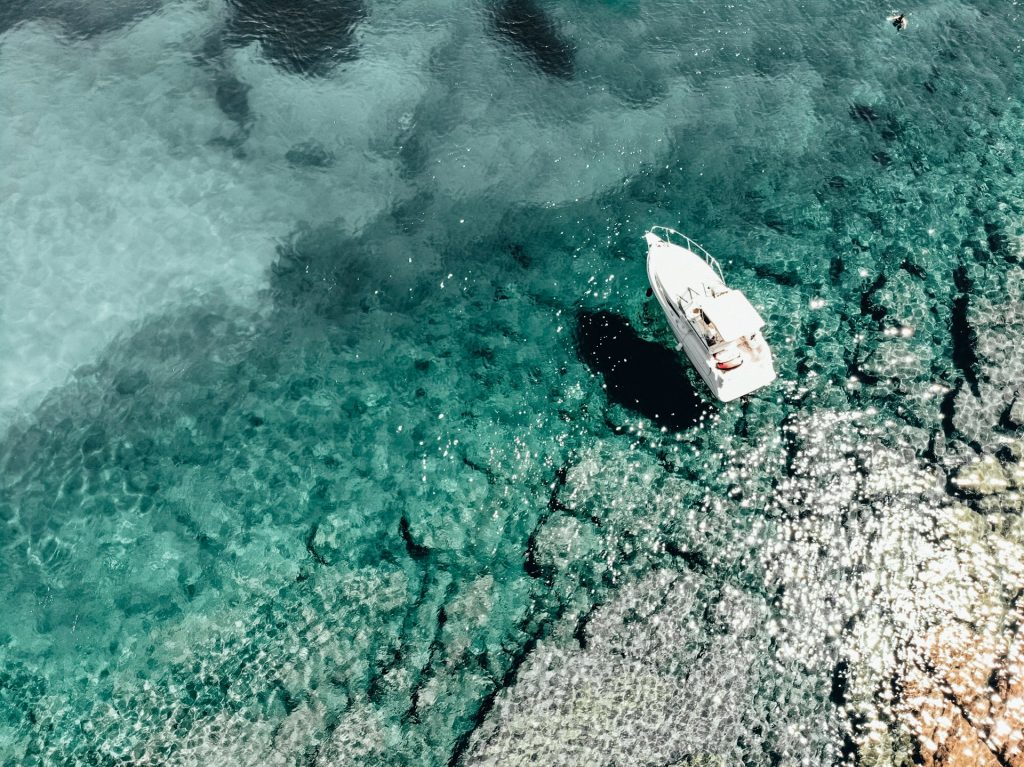
That said, once you arrive in the city, grab lunch and drop your luggage at the hotel, you’ll head to the atmospheric Old Port of Dubrovnik and hop on the fast ferry to Lokrum, a lush island located just 600 meters off the coast. The ride only takes 15 minutes, with a new ferry leaving every 30 minutes (sometimes every 15 minutes) between 09h00 and 19h00 from May to September. The total fare is €27,00, a sum which might seem a bit steep, but at least also covers the admission fee to the nature reserve (plus round-trip transportation). Once in Lokrum, and given your limited time, we recommend visiting the Botanical Garden, an exotic park where peacocks and wild rabbits roam freely, and the Benedictine Monastery, an ancient building housing a replica of the famous “Iron Throne” as a thank-you for allowing the tv-show to be filmed on the premises. A few meters to the south, you can have a swim at the Dead Sea of Lokrum, a lagoon fed by the Adriatic Sea that has an extremely high salt content due to rock erosion. Like its Middle Eastern namesake, the tough part is not to stay afloat. For a more conventional experience, Lokrum Beach offers a stone pier with direct access to the Adriatic. Finally, to cap off your day before returning to Dubrovnik, hike the quick trail to Fort Royal, built by the French at the island’s highest point. It’s a brief walk, but the views from atop are nothing short of mesmerizing.
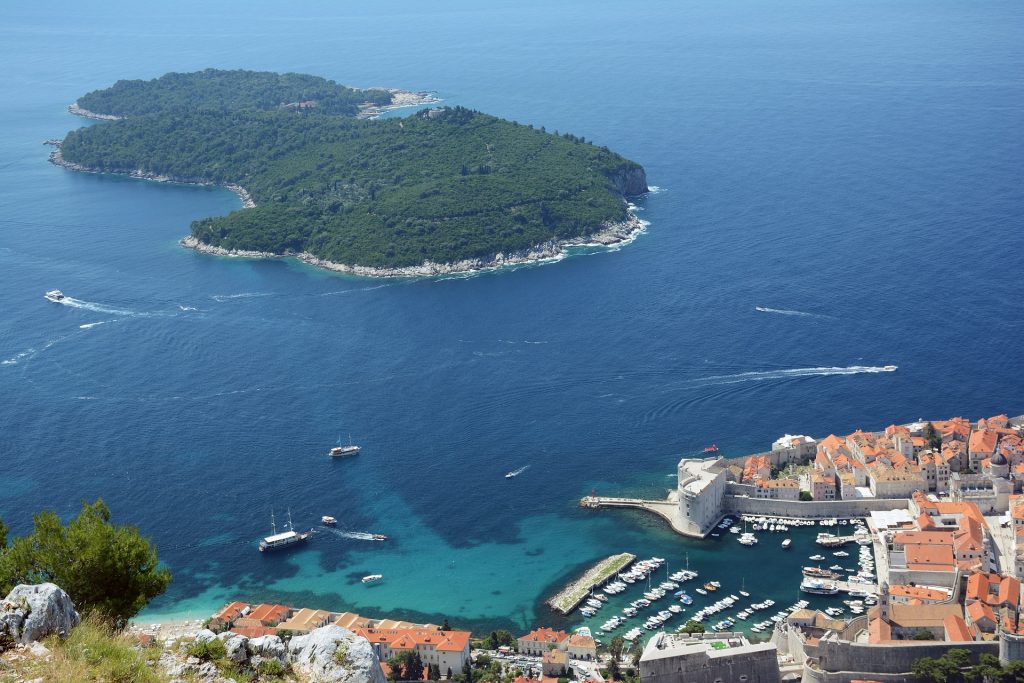
Sixth day wrap-up:
- Old Port of Dubrovnik
- Island of Lokrum
- Botanical Garden
- Benedictine Monastery
- Dead Sea of Lokrum
- Lokrum Beach
- Fort Royal
Croatia 7-Day Itinerary: Day 7 – Dubrovnik: Old Town

Arguably the best day in this whole itinerary (they always say you should save the best for last), you’ll finally wake up in Dubrovnik and have the entire day to delve deep into its spectacular Old Town, one of the world’s most beautiful historic districts. Much could be said and written about this city, yet no words can truly capture the essence of what your eyes will witness, which is why is better to keep it simple and just go ahead and list the must-see attractions. Without further ado, you’ll enter the Old Town through the Pile Gate and immediately come across both the Onofrio Fountain and the St. Saviour Church, while the picturesque cloisters of the Franciscan Monastery await next door. Right next to the gate, you’ll find one of the entrance points to the Dubrovnik City Walls. Extending for approximately 2 km, walking along these perfectly-kept walls stands as the city’s quintessential tourist must-do, as each bastion, tower or fort reveals a different panoramic view of the terracotta rooftops, stone façades and the crystal-clear waters of the Adriatic, with the shape of Lokrum Island adorning the landscape. While the admission fee is quite heavy, at €35,00 during high season (€15,00 during the rest of the year), it’s better to go out and buy a Dubrovnik Pass. For the exact same price, this pass grants unlimited access to public transportation and free admission to several other tourist attractions. Among the wall’s different vantage points, the best views can be had from Fort Bokar and from Minceta Tower.

Back to your starting point, you’ll then take a stroll along Stradun, the main thoroughfare in the Old Town and one of its highlights. Along this pedestrian street, be sure to visit War Photo Limited (€10,00), a photojournalistic exhibition showcasing images from different conflicts, and a great way to learn more about the 1990’s Yugoslav Civil War that ravaged the city. At the end of Stradun, you can stop for a photo op at the magnificent Sponza Square. As you venture into the narrow alleyways and steep staircases of the inner streets, be sure to check out some of Dubrovnik’s most popular places of worship, such as the Cathedral of the Assumption and the Church of Saint Ignatius. Notably, the latter is sits right next to the Jesuit Staircase, the place where the infamous “Shame, Shame” scene from Game of Thrones was filmed (yes, that one!). Before bidding adieu to the Old Town through the Ploce Gate, opposite to the gate you used to enter the historic center, don’t forget to take a tour of the Rector’s Palace (€15,00), once the seat of the local governor (known as the Rector) when Dubrovnik was part of the Republic of Ragusa.

Outside the city walls, you’ll just need to walk a mere 250 meters to the Dubrovnik Cable Car (€27,00 round trip; €15,00 one way), the scenic transport mode that will take you to the summit of Mount Srd in just 10 minutes. From this vantage point, you can catch the undisputed best panoramic view in all of Dubrovnik, stretching for up to 60 km on clear days! Back on ground level, and before calling it a day, you can use your ticket for the city walls (or the Dubrovnik Pass) to visit Fort Lovrijenac. Though technically part of the defensive fortifications, this tower isn’t connected to the rest of the wall, meaning the access is given through a different entrance. Regardless, this is a great place to bid farewell to Croatia while watching the sun setting over Dubrovnik.

Seventh day wrap-up:
- Old Town of Dubrovnik
- Pile Gate
- Onofrio Fountain
- Saviour Church
- Franciscan Monastery
- Walls of Dubrovnik (Fort Bokar and Minceta Tower)
- Stradun
- War Photo Limited
- Sponza Square
- Cathedral of the Assumption
- Church of Saint Ignatius
- Jesuit Stairs
- Rector’s Palace
- Ploce Gate
- Dubrovnik Cable Car (Mount Srd)
- Fort Lovrijenac
Where to eat in Croatia – Best Restaurants in Dubrovnik
- Konoba Tabak (Croatian traditional)
- Tavern Arka (Croatian traditional)
- Konoba Kenova (Croatian traditional)
- Vita Bella (cevapi, grilled meats and pizza)
- Preša (cevapi, grilled meats and sandwiches)
- Holy Burek (burek)
- CHIHUAHUA (Mexican)
- Pizzeria Tabasco (pizza)
- GreenGarden (hamburgers)
- Ala Mizerija (beach bar)
Heymondo offers a wide range of travel assistance insurance policies. They combine the best quality, service and price with various levels of coverage, so you’re covered on your weekend getaways and long trips. Buy insurance »




